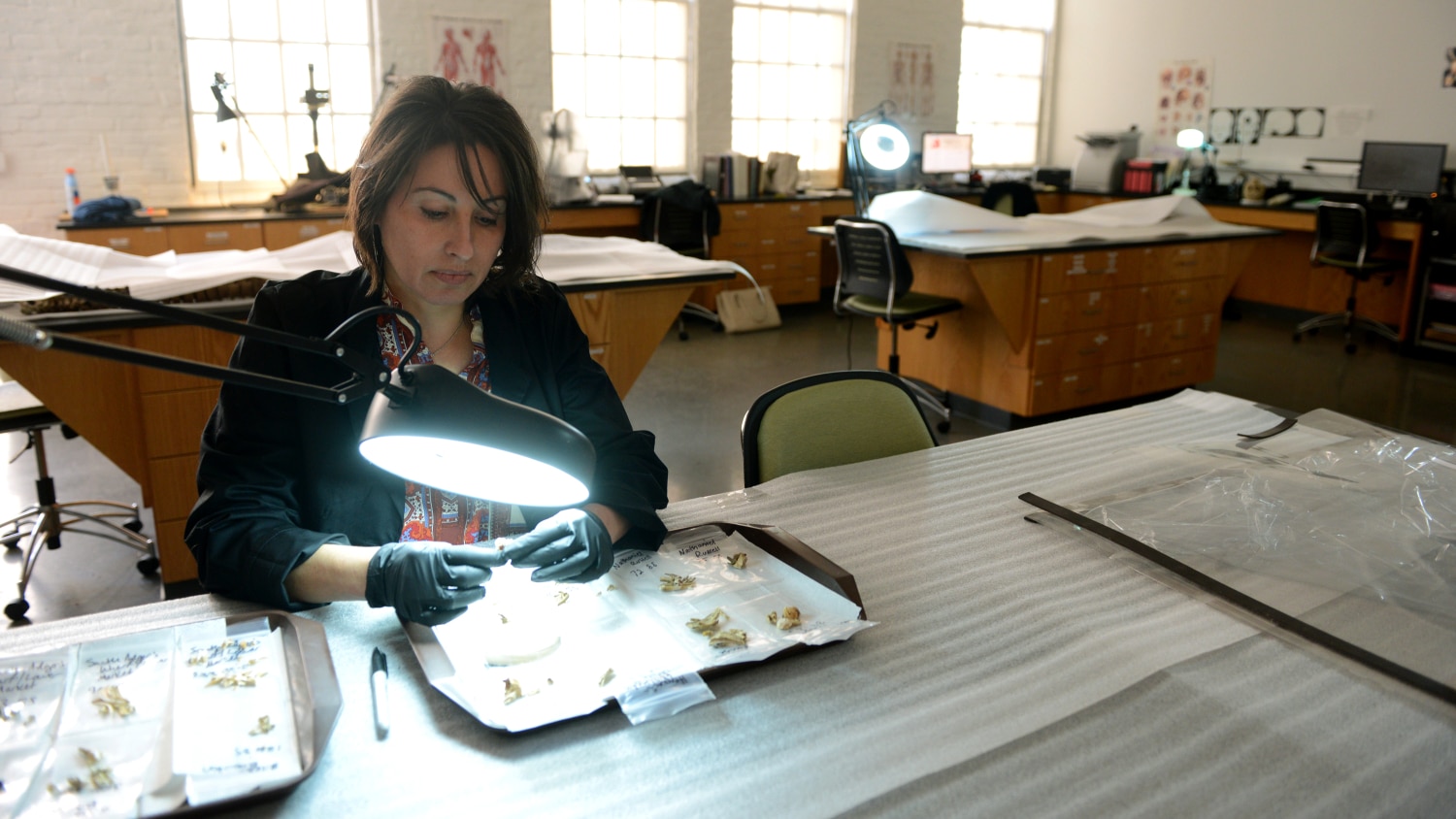NC State was recently announced as one of two forensic anthropology subcontractors with RTI International on the management of the National Missing and Unidentified Persons System (NamUs). Ann Ross, professor in the Department of Biological Sciences, will lead the NC State team on NamUs work.
Ross has been a longtime leader in the field of forensic anthropology, working extensively with law enforcement and on international efforts to identify victims of war crimes and political killings. Since 2007, her lab has been involved in the prosecution of more than 100 criminal cases (including the Laura Ackerson murder and 10 cases involving children 13 years of age and younger), as well as in resolving more than 60 other identification cases.
NamUs provides investigative support and free forensic services, including DNA testing, fingerprint examination, forensic anthropology and odontology, to help resolve missing, unidentified and unclaimed persons cases across the United States. It has helped investigators, coroners and medical examiners solve more than 2,700 missing persons cases and identify more than 2,000 decedents from their remains. RTI’s collaborators on the project include forensic experts from several universities, organizations, agencies and institutes.
We talked to Ross about her work with NamUs and its significance.
How did you get involved with this project? Have you worked with NamUs before?
My lab holds a contract with the North Carolina Department of Health and Human Services to handle forensic anthropology casework for the state. All missing and unidentified people in the state have to be included in NamUs, so we’ve been familiar with the system since its launch. But now, through this partnership with RTI, we’ll not only be handling our unidentified cases for the state but also expanding our scope to help facilitate other cases at a national level.
What type of work will your lab be doing?
Different NamUs subcontractors handle different aspects of the identification work. My lab specializes in forensic anthropology, which involves developing a biological profile for unidentified skeletal remains. This involves examining the remains using various state-of-the-art tools and methods to discover details like age at death, stature, biological sex and place of origin. We also do trauma analysis, which involves examining the remains to identify tools or weapons used in the victim’s death.
What unique learning opportunities do you expect to be able to offer students?
This collaboration will continue to give students in my lab really valuable opportunities to do hands-on work to help resolve real cases. We’re not like a lot of research labs — because of the criminal evidence we deal with, we have a very secure environment and are uniquely equipped with the tools needed to do this kind of work.
RTI is also providing me with funding for three graduate students. In addition to the forensic analysis, they will be helping with case review and updating records in NamUs as needed.
Why is this work important to you?
All of the cases really make an impact on me personally, even after doing this work for so long. There are an estimated 40,000 sets of unidentified human remains in the United States, which is a national humanitarian crisis. Usually, individuals we encounter through NamUs are people of color or from other populations that have been marginalized in life and now in death. A personal identity is a basic human right outlined in various international human rights conventions and decrees, and being able to restore that to individuals is extremely important.
This post was originally published in College of Sciences News.



